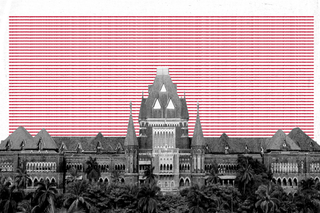
In a First, Bombay HC Issues Guidelines to Protect Identity in Workplace Sexual Harassment Cases
The HC’s guidelines are the first of their kind to protect the anonymity of parties by restricting media reporting and court record keeping.

The Bombay High Court has laid down guidelines for media organizations and courts on workplace sexual harassment cases. The guidelines focus on shielding the parties’ anonymity and are the first of their kind to be issued by a high court.
“It is imperative to protect the identities of the parties from disclosure, even accidental disclosure, in these proceedings. This is in the interest of both sides. These are only initial guidelines and will necessarily be subject to revision or modification as needed. I would suggest that these guidelines are the minimum required,” Justice Gautam S. Patel said while passing the guidelines on Friday.
The “minimum” required is meant to plug the gap of absent working protocols while reporting on or dealing with the Sexual Harassment of Women at Workplace (Prevention, Prohibition and Redressal) Act, 2013 (“POSH Act”). At the surface, they protect the identity of a survivor — to shield sensational coverage and prevent the survivor from being connected to the case for posterity — while also avoiding false complaints against the accused.
The guidelines apply to courts, their registries, and the media. Essentially, no court order will mention the parties’ names or any personal information, including phone numbers, addresses, or email IDs. The hearings will take place in private chambers or online. Orders cannot be published on the court’s website unless the court has granted special approval. The court will also bar witness depositions from being uploaded. The court restricts any person “from disclosing contents of any order, judgment or filing to the media or publishing any such material in any mode or fashion by any means, including social media, without specific leave of the court.”
Any breach of these guidelines will amount to contempt of the court, the bench noted.
The restrictions come from a place of protecting the identity of survivors in the digital age. Yet, the practicality and intent of each facet of these protocols deserve greater scrutiny.
For one, experts point out the befuddling logic in protecting the identity of a perpetrator once convicted. Before and with the POSH Act, bureaucratic loopholes, stigma, and a culture of impunity still mar the mechanism to file official complaints at the workplace is still marred by. The #MeToo era saw people speak up with greater confidence about authoritative figures — the internet and media being a cornerstone of this narrative. By preventing both sides from mentioning details of an order in media or social media, the guidelines jam this line of expression. Further, “there is a likelihood that serial offenders may misuse the anonymization coupled with this clause in the guidelines as grounds for defamation suits,” law student Kajal K. Iyer noted.
“With no order copy available, how is one supposed to use the defense of truth against defamation?”
Related on The Swaddle:
Four Years After #MeToo, Justice Remains Elusive for Women Who Report Sexual Harassment At Work
Another concern is that with record keeping. The national database of sexual offenders is not in the public domain, and only law enforcement agencies in Indian can access it. Guarding these documents will prevent company HRs and other systems from doing safety checks while hiring.
There is some merit in shielding the anonymity of an accused while the case is going on. But as Iyer points out: “If the worry is about false cases, POSH is not the only crime, in which there are false cases. We have seen lives upended by wrongful application of sections of the IPC, UAPA, and several other laws too. There is no similar protection to the accused in such cases.”
The restrains on media reporting to protect the safety of survivors can help to an extent. However, as LiveLaw points out, it can make reporting on POSH cases “completely out of bounds.”
The blanket restrictions on speaking about the orders on different platforms may also have a chilling effect. The survivors may feel more cornered by the legal gymnastics. As a 2017 survey by the Indian National Bar Association found: Most women tend “not to report sexual harassment to management because of stigma, fear of retribution, embarrassment, lack of awareness of reporting policies, or lack of confidence in the complaints mechanism.”
POSH, as a legal framework, suffers from its inadequacies. With that in mind, there is a need to protect the safety of survivors while balancing their right to speak out and the right to be forgotten. In effect, the new guidelines can help with locking away the name and personal details of survivors and people falsely accused.
However, the ban on locking away the identity of a convicted sex offender is where the court’s guidelines could be strengthened in the time to come.
As feminist philosopher Sara Ahmed told The Swaddle: “The story of a complaint made within an institution can be to tell another kind of story about the institution; a story that counters the story the institution tends to tell of itself and about itself.”
Saumya Kalia is an Associate Editor at The Swaddle. Her journalism and writing explore issues of social justice, digital sub-cultures, media ecosystem, literature, and memory as they cut across socio-cultural periods. You can reach her at @Saumya_Kalia.
Related


Assam Eviction Drive Displaces Over 800 Muslim Families
